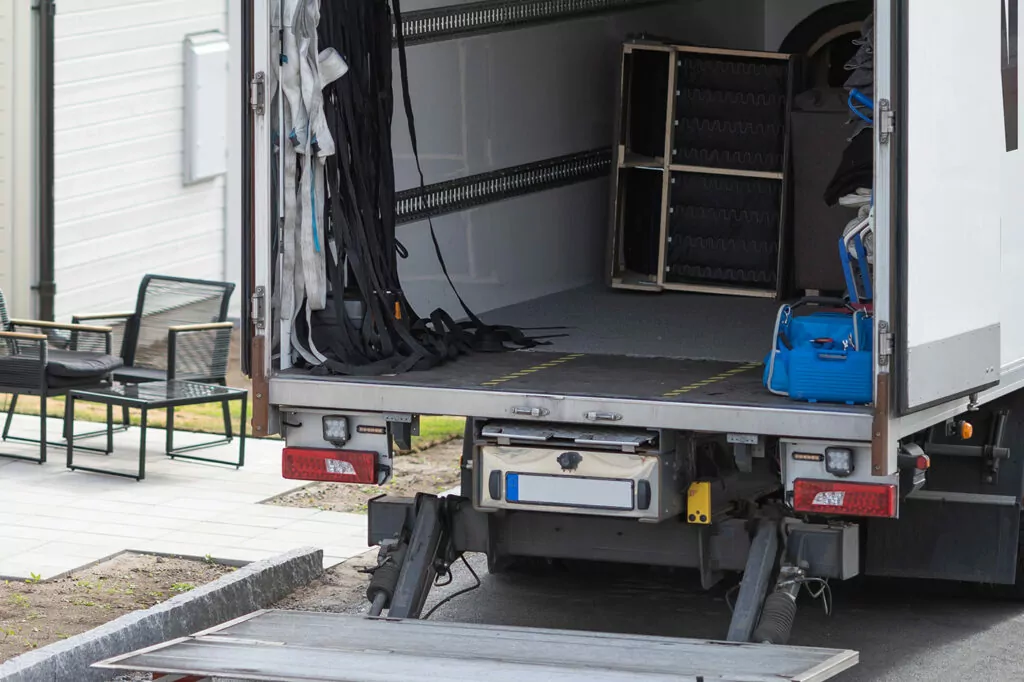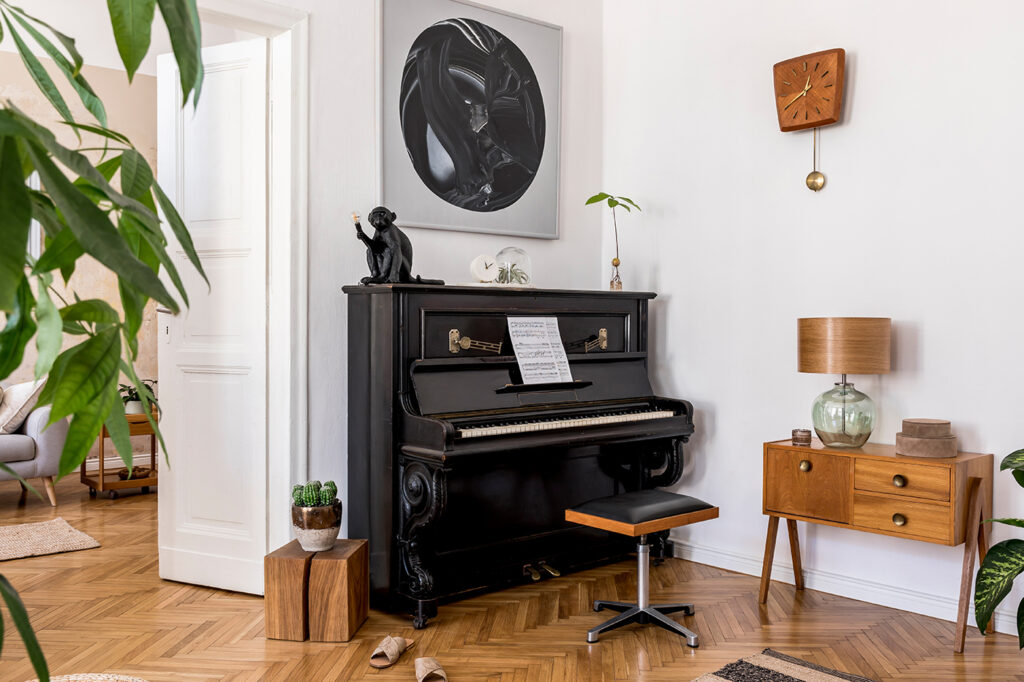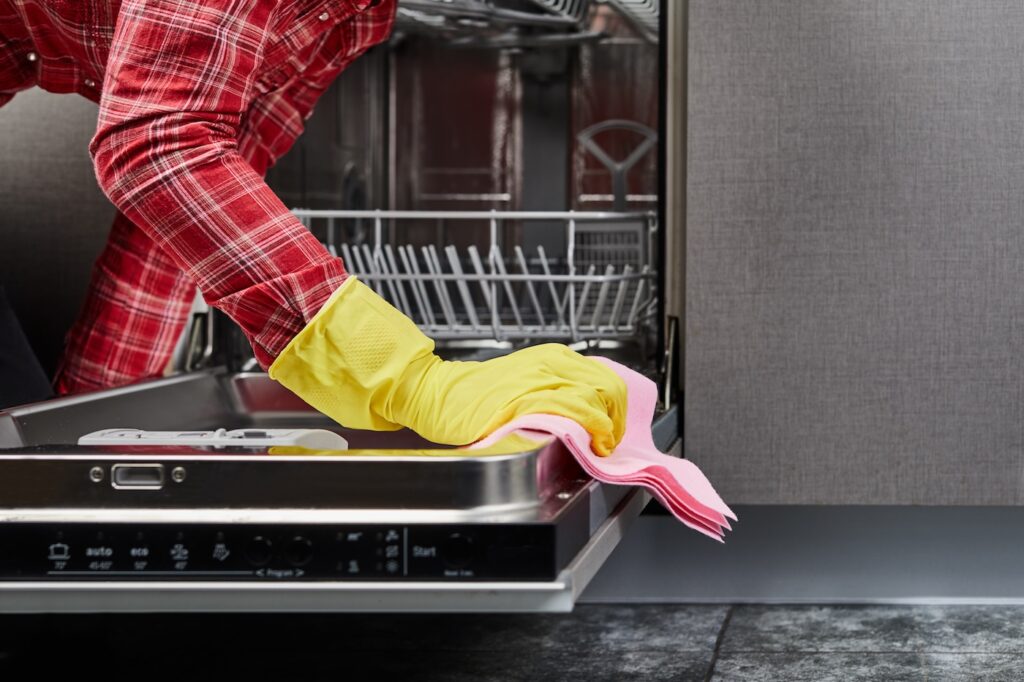Moving a piano can be a challenging task, fraught with potential risks and complications. Whether you’re relocating an upright piano or a grand piano to a new home, or have recently bought or sold one, the process requires meticulous planning and execution.
The weight and delicate nature of these instruments demands careful handling to prevent costly damage or injury. Even for enthusiastic DIYers, hiring a professional piano moving company is highly recommended, as it can help ensure the safety of your piano.
How much does it cost to move a piano? Hiring professional piano movers can range from a few hundred dollars to over a thousand, but it’s a worthwhile investment to ensure the safety of your cherished instrument.
If you’re set on moving your piano yourself, this guide will provide the essential steps to help you DIY your piano move.
Preparing Before Moving a Piano
Moving a piano is a delicate and intricate process that requires thorough preparation to ensure the safety of your cherished musical instrument. Neglecting proper planning can lead to costly damages, injuries, or even the heartbreak of an irreparably damaged piano.
Before reading about how to move a piano yourself, it’s crucial to take the necessary steps, from gathering the right equipment to enlisting sufficient help, to protect your valuable investment and prevent any potential damages.
Have the Right Equipment

Having the appropriate equipment is crucial when moving a piano, especially for heavy and bulky instruments like a baby grand piano. Investing in high-quality moving blankets and a sturdy piano board (also known as a skid board) can protect your piano from scratches, dents, and other potential damages during transit. Additionally, heavy-duty moving straps can help secure the piano to the board, preventing it from shifting or falling during the move.
Make the Necessary Measurements

Before attempting to move your piano, take precise measurements of the instrument, doorways, staircases, and hallways in both your current and new location. This will help you determine if the piano can safely navigate these spaces and identify potential obstacles or tight spots that may require disassembling or rearranging furniture. Overlooking this step can lead to frustrating situations where the piano becomes stuck or worse, sustains damage from being forced through tight spaces.
Protect the Piano

Protecting your piano during the move is of utmost importance. Invest in high-quality moving blankets to wrap and cushion the piano, ensuring it remains safe from scratches, dents, and other potential damages. Additionally, consider using towels or baby-proof bumpers to cover sharp edges or corners the piano may come into contact with during the move.
Have Enough Help

Moving a piano is a team effort that requires multiple people, depending on the size and weight of the instrument. For a typical upright piano, you’ll need at least four able-bodied individuals, while a grand piano may require six or more helpers.
It’s crucial to enlist the assistance of strong and experienced individuals who can handle the piano’s weight and navigate it through narrow passages or down flights of stairs without causing harm to themselves or the instrument.
Plan for the Moving Truck

If you’re undertaking a long-distance move, it’s essential to plan for a suitable moving truck that can accommodate the size and weight of your piano. Consider renting a truck with a ramp or lift-gate to facilitate loading and unloading the instrument safely. While a moving truck is preferred, a pickup truck may also be used for a small upright piano.
Moving a piano is a significant undertaking that requires careful planning and execution. By following these essential steps, such as gathering the right equipment, taking accurate measurements, enlisting sufficient help, protecting the piano, and planning for the moving truck, you can increase the chances of a successful and stress-free piano relocation experience.
Steps to Move a Piano

Moving a piano requires careful planning and execution to prevent any damage to the instrument or injuries. Following the proper steps is crucial for successful piano moving. Here are two step-by-step guides on safely moving an upright or grand piano.
How to Move an Upright Piano
1. Wrap the Piano

Securely wrap the piano with moving blankets or padding to protect it from scratches and dents. Cover the keyboard and pedals with bubble wrap and secure the lid with packing tape. Ensure all sides and corners are covered.
2. Get Into Position

Moving an upright piano upstairs or downstairs requires at least four people—two to lift and two to guide. Assign roles and ensure everyone knows their part for a safe lift.
3. Get the Dolly Ready

Use a sturdy piano dolly or hand truck. Before positioning it close to the piano, make sure you know how much the piano weighs to ensure the dolly can support the weight. If using a regular dolly, be cautious as it might not be as stable.
4. Lift and Load

Lift the piano onto the dolly using proper lifting techniques (bend at the knees, keep your back straight). Secure the piano with moving straps to prevent sliding.
5. Navigate Tight Spaces

Move the piano slowly through doorways and hallways, guiding it carefully to avoid damage to the piano or surroundings.
6. Load Into the Moving Truck

Use a ramp or lift gate to load the piano into the truck. Secure it with straps to prevent shifting during transit.
7. Move the Piano to Its New Location

Carefully unload and roll the piano to its new location, guiding it down ramps or stairs safely. Lift it off the dolly and position it in its new spot.
Moving an upright piano requires the right know-how, moving supplies, and team effort. By following these steps and taking the necessary precautions, you can increase the chances of a successful and damage-free piano relocation.
If the move seems too challenging, consider professional piano moving services to ensure safety.
How to Move a Grand Piano
Moving a grand piano is a monumental task that requires careful planning, ample manpower, and specialized equipment. These heavy objects are not only cumbersome but also incredibly delicate, making it essential to follow the proper steps to ensure a safe and successful relocation.
1. Disassemble the Piano

Remove detachable parts like the music rack, lid, and piano legs using a screwdriver. Wrap each piece with moving blankets or bubble wrap and secure them with packing tape.
2. Wrap the Piano

Cover the keyboard and pedals with bubble wrap. Tilt the piano onto its side and wrap the entire body with moving blankets, securing them with tape or straps.
3. Position the Piano on a Skid Board

Place the wrapped piano on a skid board designed to support its weight. Use lifting straps if necessary to hoist it securely onto the board.
4. Navigate Through Tight Spaces

Carefully maneuver the piano through doorways and hallways. Assign team members to guide and ensure it doesn’t get stuck or cause damage.
5. Load Into the Moving Truck

Use a ramp or lift gate to load the piano into the truck. Secure it with ratchet straps to prevent shifting during transit.
6. Unload and Reassemble

Carefully unload the piano and position team members on all sides for stability. Reassemble the detached parts once inside the new location.
Moving a grand piano is a complex task that should not be taken lightly. If you have any doubts about your ability to handle the move safely, it’s always wise to consider hiring professional piano movers. They have the specialized equipment, expertise, and experience to ensure your cherished instrument arrives at its new home undamaged.
Have other heavy items to move? Check out our comprehensive guides on moving sofas, pool tables, or mattresses.
Tips for Moving a Piano
- Assess Size and Type: Determine if your piano is a grand, large upright, or smaller model, as larger pianos require more manpower and specialized equipment.
- Consider Professional Help: DIY moves can risk damage and injury. Professional movers have the expertise and tools for a safe and efficient relocation.
- Clear the Path: Ensure the path from the piano to the truck is obstacle-free and that doorways and staircases can accommodate the piano’s size.
- Handle with Care: Move the piano slowly and cautiously, avoiding bumps and impacts.
- How to Move a Piano Down Stairs: Use a sturdy metal ramp or a piano skid board to guide the piano safely down the steps. Have helpers positioned strategically to control the descent and prevent accidents.
- How to Move a Piano Up Stairs: Disassemble the piano if possible, and use ropes and pulleys to lift the pieces one at a time. Alternatively, hire professionals with the necessary equipment and expertise.
- Post-Move Inspection: After moving, have the piano tuned and inspected by a technician, as vibrations can affect its components.
Patience and proper techniques are key to a safe piano move. When in doubt, hire professionals to avoid costly mistakes.
For more moving tips, click here. Or read our moving day survival guide.
What to do After Moving a Piano
After moving your piano, it’s crucial to take the right steps to ensure it remains in top condition.
Firstly, position the piano correctly in its new location. Upright pianos should be placed against an interior wall, away from direct sunlight, air vents, or drafty areas. Grand pianos should have their straight edge against an interior wall for optimal sound resonance.
If you moved a grand piano—anything from a baby grand to a full-sized concert grand—you’ll likely need assistance reassembling it. This includes reattaching components like the piano lid, legs, and pedals—a challenging task best left to professionals.
Once positioned, give the piano a thorough cleaning using a soft, clean cloth to remove any dust or debris from the move. Dust can scratch the finish and impact internal mechanisms, so avoid cleaning the interior yourself.
The most important step is having the piano tuned by a professional. The vibrations and environmental changes during the move can cause the strings and components to shift, throwing the instrument out of tune. While you can tune it immediately, it’s recommended to wait a few weeks to allow it to fully acclimate before scheduling a professional tuning service.
By positioning correctly, reassembling if needed, cleaning the exterior, and tuning, you’ll ensure your prized piano is in optimal playing condition after its relocation.
Hire Professional Help
Moving a piano is complex and requires specialized equipment and expertise. Hiring professional help is often the best choice, especially if you lack experience. Finding a heavy furniture moving service through Taskrabbit is a convenient option for safely relocating your piano.
Through TaskRabbit, you can describe your piano moving needs, including the type of piano, distance, and specific requirements. You’ll be connected with experienced Taskers who specialize in moving heavy furniture. It is recommended to find a Tasker with previous piano moving experience, given the delicate nature of the job. Experienced piano moving Taskers will have the knowledge and tools to handle your instrument with care.
Book and pay securely through Taskrabbit, which holds the payment until the job is completed to your satisfaction. This ensures a seamless and stress-free experience. Investing in professional help ensures the safety of your piano and provides peace of mind during your move.














